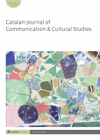
Full text loading...
 , Sebastián Sánchez-Castillo1
, Sebastián Sánchez-Castillo1 , Àlvar Peris1
, Àlvar Peris1
This is a study on videos generated or shared on Facebook, Twitter and Instagram by the main political parties’ candidates during the general election campaign for the government of Spain in April 2019. Using a quantitative analysis and a statistical approach, the means of audiovisual persuasion used by the candidates are analysed, addressing their emotional nature. It is shown that the traditional political parties in their campaigns use audiovisual formats that are less emotional than those of the new emerging parties. Secondly, a clear difference can be seen among the leaders in their use of audiovisual formats to convey their messages.

Article metrics loading...

Full text loading...
References


Data & Media loading...

Publication Date:
https://doi.org/10.1386/cjcs_00061_1 Published content will be available immediately after check-out or when it is released in case of a pre-order. Please make sure to be logged in to see all available purchase options.